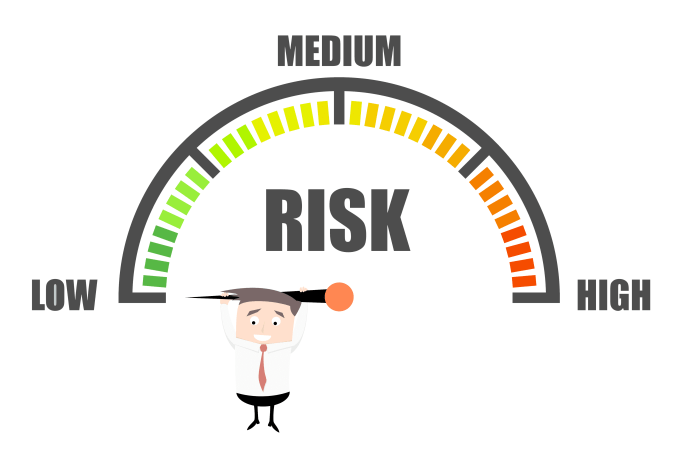Low-risk business investments offer a secure way to grow your capital without taking on excessive risks. Let’s explore the various options available and how you can make the most out of these opportunities.
Types of low-risk business investments

When considering low-risk business investments, there are various options available that offer stability and security for businesses looking to grow their capital without taking on high levels of risk.
1. Bonds
Bonds are a popular choice for low-risk investments as they are considered safer than stocks. These fixed-income securities are issued by governments or corporations and pay a fixed interest rate over a specific period. The principal amount is returned to the investor at maturity, making bonds a relatively secure investment option.
2. Certificates of Deposit (CDs)
Certificates of Deposit are time deposits offered by banks or credit unions that guarantee a fixed interest rate for a specific term. CDs are insured by the Federal Deposit Insurance Corporation (FDIC) up to a certain limit, making them a low-risk investment option for businesses looking to earn a modest return on their funds.
3. Money Market Funds
Money market funds invest in short-term, high-quality securities such as Treasury bills and commercial paper. These funds aim to maintain a stable net asset value (NAV) of $1 per share, making them a low-risk investment option with minimal fluctuations in value. Money market funds are considered liquid investments, allowing businesses to access their funds quickly if needed.
4. Real Estate Investment Trusts (REITs)
Real Estate Investment Trusts are companies that own, operate, or finance income-generating real estate across a range of property sectors. REITs provide a way for businesses to invest in real estate without having to directly purchase properties. They offer a steady income stream through dividends and are considered a low-risk investment option due to their stable returns.
5. Treasury Securities
Treasury securities are issued by the U.S. Department of the Treasury and are backed by the full faith and credit of the U.S. government. These securities include Treasury bills, notes, and bonds, each with varying maturities and interest rates. Treasury securities are considered one of the safest investment options available, making them a low-risk choice for businesses seeking to preserve capital.
Factors to consider when choosing low-risk investments
When it comes to choosing low-risk investments, there are several key factors to consider to ensure a balanced and secure investment strategy. Diversification, market conditions, and risk assessment are crucial elements that can impact the overall risk levels of an investment portfolio.
Importance of Diversification in Low-Risk Investments
Diversification is a fundamental principle in investing that involves spreading your investments across different asset classes, industries, and geographic regions. By diversifying your portfolio, you can reduce the overall risk exposure and minimize the impact of any single investment underperforming. This strategy helps to cushion the impact of market fluctuations and provides a more stable return over time.
Impact of Market Conditions on Risk Levels
Market conditions play a significant role in determining the risk levels of investments. Economic factors, geopolitical events, and industry trends can all influence the performance of investments. During times of market volatility or economic uncertainty, the risk associated with certain investments may increase. It is essential to monitor market conditions closely and adjust your investment strategy accordingly to mitigate potential risks.
Key Indicators for Assessing Investment Risk
When evaluating the risk associated with an investment, there are several key indicators to consider. These include the historical performance of the investment, the volatility of the asset class, the credit rating of the issuer (for bonds), and the overall market conditions. Additionally, factors such as liquidity, inflation rates, and interest rates can also impact the risk profile of an investment. Conducting thorough research and analysis to assess these indicators can help you make informed decisions and build a well-rounded, low-risk investment portfolio.
Strategies to mitigate risks in business investments

Risk management is a crucial aspect of business investments, as it involves identifying, assessing, and prioritizing risks followed by coordinated efforts to minimize, monitor, and control the impact or probability of unfortunate events. By implementing effective risk management strategies, investors can safeguard their investments and optimize returns.
Techniques for reducing risks while maintaining profitability, Low-risk business investments
- Diversification: Spreading investments across different asset classes, industries, or geographic regions can help reduce the impact of a single adverse event on the overall portfolio.
- Due diligence: Conduct thorough research and analysis before making investment decisions to minimize the chances of unexpected losses.
- Setting stop-loss orders: Establish predetermined price levels to automatically sell an investment if it reaches a certain point, limiting potential losses.
- Hedging: Using financial instruments like options or futures to offset potential losses in the underlying investment.
- Regular monitoring: Stay informed about market trends and economic developments to make timely adjustments to the investment strategy.
Designing a risk mitigation plan for a hypothetical low-risk investment scenario
In a hypothetical low-risk investment scenario, such as investing in government bonds, the following risk mitigation plan can be devised:
- Assess the credit rating of the issuing government to evaluate default risk.
- Diversify the bond portfolio by investing in bonds with varying maturities to reduce interest rate risk.
- Monitor economic indicators and government policies that may impact bond prices.
- Consider using bond mutual funds or exchange-traded funds (ETFs) for added diversification and professional management.
- Regularly review and rebalance the bond portfolio to ensure it aligns with the investment objectives and risk tolerance.
Long-term vs. short-term low-risk investment approaches

When it comes to low-risk investments, investors often have to decide between long-term and short-term approaches. Each approach comes with its own set of advantages and disadvantages, impacting the overall risk profile of the investment.
Long-term Low-Risk Investments:
Long-term low-risk investments typically involve holding onto an investment for an extended period, often years. The advantages of this approach include:
– Potential for higher returns over time due to compounding interest.
– Lower susceptibility to market fluctuations and economic downturns.
– More stability and predictability in returns.
However, long-term investments also have their disadvantages, such as:
– Limited liquidity, as funds are tied up for longer periods.
– Less flexibility to react to changing market conditions.
– Potential opportunity costs if better investment options arise.
Short-term Low-Risk Investment Strategies:
Short-term low-risk investments are focused on generating quick returns within a shorter time frame, usually less than a year. Examples of short-term low-risk investment strategies include:
– Certificates of Deposit (CDs) with short maturity periods.
– Money market accounts with competitive interest rates.
– Treasury bills or bonds with short durations.
Time Horizon and Risk Profile:
The time horizon of an investment significantly impacts its risk profile. Short-term investments are generally less risky compared to long-term investments due to the shorter exposure to market volatility. However, short-term investments may offer lower returns and limited growth potential compared to long-term investments. Investors need to assess their financial goals, risk tolerance, and investment timeline to determine the most suitable approach for their portfolio.
In conclusion, low-risk business investments provide a stable foundation for your financial portfolio, ensuring steady growth and protection against market fluctuations. By making informed decisions and implementing sound strategies, you can achieve your investment goals with confidence.
Investing in new technology is crucial for businesses looking to maximize growth and innovation. By staying ahead of the curve with the latest tools and resources, companies can position themselves as industry leaders. Embracing new technology can lead to increased efficiency, productivity, and competitiveness. To learn more about how investing in new technology can drive business success, check out this article on Investing in new technology Maximizing Business Growth and Innovation.
Small businesses seeking success must secure proper funding for their investments. Access to capital is key in driving growth and seizing opportunities for expansion. With the right financial resources, small businesses can thrive and reach their full potential. To discover more about the importance of funding for small business investments, read this informative piece on Funding for small business investments Key to Success.
Corporate investment strategies play a critical role in maximizing financial growth and stability. By carefully planning and executing investment decisions, companies can strengthen their position in the market and achieve long-term success. Strategic investments can lead to increased revenue, market share, and overall profitability. To delve deeper into corporate investment strategies, visit this article on Corporate Investment Strategies Maximizing Financial Growth and Stability.




